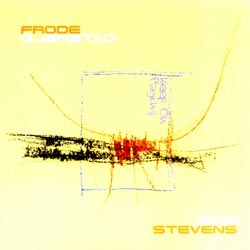
Norwegian saxophonist Frode Gjerstad recorded this wonderful, spirited meeting with his friend, the late, great drummer and conceptualist John Stevens in 1994.
In Stock
Quantity in Basket: None
Log In to use our Wish List
Shipping Weight: 5.00 units
EU & UK Customers:
Discogs.com can handle your VAT payments
So please order through Discogs
Sample The Album:
Frode Gjerstad-alto saxophone
John Stevens-drums, cornet
Click an artist name above to see in-stock items for that artist.
UPC: 649849982247
Label: FMR
Catalog ID: FMR 162-I0405
Squidco Product Code: 11388
Format: CD
Condition: New
Released: 2005
Country: Great Britain
Packaging: Jewel tray, not sealed.
Recorded in Stavanger on April 30, 1994 by Frode Gjerstad.
"Norwegian saxophonist Frode Gjerstad recorded this wonderful, spirited meeting with his friend, the late, great John Stevens in 1994 and it is finally seeing a release on FMR. John and I did a few duos over the years and this is the last one we did. It was a warm up for a concert we were going to play with Kent Carter on May 2nd (which was released on Cadence as 'Last Detail'), I had just got my ADAT and this was the first recording I made on the machine. Listening back to the tape now, brings back a lot of memories. In between the tracks there is a bit of talking and joking. As we drove to the airport we talked a bit about future projects and he commented about what we had just done over the last few days, It's good what we've done, let's just keep going. In retrospect, those words get another meaning late-on"-Frode Gjerstad
Artist Biographies
• Show Bio for Frode Gjerstad "Frode Gjerstad was born in Stavanger, Norway, 24-03-1948. He started trying to play improvised music as a trumpeter in 1968. When he moved to Lund in Sweden (1971 to 1975) he got a chance to meet, talk and play with musicians interested in this music. He had at that time started playing tenor saxophone (1969). After he came back to Stavanger in 1975 he started collaborating with keyboardist Eivin One Pedersen. Together, they explored many different aspects of improvised music, as a duo or with others, but it was not until 1981, when they first played with John Stevens, that he had a real chance to feel what a dedicated musicians can do to the music-making. At the early stage of his career, he choose mainly to play with international musicians because there was no tradition in Norway for the free music. However, after the club Blå opened in Oslo in 1996, a good number of younger musicians are now picking up on the music. His relationship with British drummer, John Stevens which started in -81 and lasted up until his death in -94, was of great importance both musically as well as on a personal level. Through Stevens, he was introduced to some of the finest British improvisers and got to know their way of playing. Together, they led the trio "Detail" starting with Johnny Dyani on bass. And after Johnny died in -86, with Kent Carter. He has also been active, running a larger group of mostly Norwegian musicians, the Circulasione Totale Orchestra. He started the group using electric instruments and modern rock-oriented rhythms. He has used the band to present his own compositions as well as a workshop and a place for young people to get to know free music. The band presented a commissioned work at the Molde Festival in -89 with a 13 man band combining free improvisations, compositions as well as rapping and scratching.(Three horns, three bassists, three drummers, accordeon, guitar a rapper and a DJ). The Circulasione Totale Orchestra is a powerful ever-changing band. But it´s not easy to keep such a big group together. In 1998 he decided to keep the core of the band which at that time was Paal Nilssen-Love on drums and Øyvind Storesund on bass and try to develop that sound. It became Frode Gjerstad Trio. So far the trio has toured Norway, Sweden, Denmark, Polen, Italy, Austria, Portugal, England, Canada and the United States. He has received several grants from various foundations and has been very active in the Norwegian Jazzmusicians Federation as well as in the committee for the Norwegian Contemporary Music Federation. Voted Jazz Musician of the Year in Norway, 1997. Part of the price was a concert where he could freely choose which musicians to use. This was the first meeting with Hamid Drake and William Parker. The concert became a tour of Scandinavia in -97 and the US in 2000. US Pianist Borah Bergman has also been important to Frode. They first met in -94 and have played as a duo and also as trio with Evan Parker and later Peter Brøtzmann. Borah has been a great inspiration and a challenge over the years! English bassist Nicholas Stephens first played with Frode in 1984. He played electric bass at the time, but it was not until after John Stevens died in 1994 that they started working together as "Calling Signals". First with a tour of England in 1995 with Paul Rutherford and Terje Isungset. And in 1996 with Louis Moholo and Danish guitarist, Hasse Poulsen. The latest version of the group has been with accordionist Eivin One Pederesen and Paal Nilssen-Love or Tony Marsh on drums. Frode also met and worked with US percussionist Kevin Norton in 2004 and they have found a common ground. They have a trio with Nicholas Stephens: Instinctual Eye. Electronic music started to make an impact when he met Lasse Marhaug. They have played some concerts together and made some recordings. Lasses sounds have opened up a whole new territory of possibilities and came at a time when Frode started playing clarinets. A very fruitful combination! Another side of the electronic thing was the group Ultralyd which was Frodes idea: to bring in a loud powerful electric bass with drums, guitar and reeds. After about a year, he left the band because the sound level was unbearable for the old man.! And he left it to the youngsters to decide how loud the band should be. Still, he has continued playing with Morten, Anders and Kjetil in other projects." ^ Hide Bio for Frode Gjerstad • Show Bio for John Stevens "John William Stevens (10 June 1940 in Brentford, Middlesex - 13 September 1994 in Ealing, west London) was an English drummer. He was one of the most significant figures in early free improvisation, and a founding member of the Spontaneous Music Ensemble (SME). Stevens was born in Brentford, the son of a tap dancer. He used to listen to jazz as a child, but was initially more interested in drawing and painting (media through which he also expressed himself throughout his life). He studied at the Ealing Art College and then started work in a design studio, but left at 19 to join the Royal Air Force. He studied the drums at the Royal Air Force School of Music in Uxbridge, and while there met Trevor Watts and Paul Rutherford, two musicians who became close collaborators. In the mid-1960s Stevens began to play in London jazz groups alongside musicians like Tubby Hayes and Ronnie Scott, and in 1965 he fronted a septet. Influenced by the free jazz he was hearing coming out of the United States by players like Ornette Coleman and Albert Ayler, his style began to move away from fairly traditional be-bop to something more experimental. In 1966 SME was formed with Watts and Rutherford and the group moved into the Little Theatre Club at Garrick Yard, St. Martin's Lane, London to develop their new music. In 1967 their first album, Challenge, was released. Stevens then became interested in the music of Anton Webern, and the SME began to play generally very quiet music. Stevens also became interested in non-Western musics. The SME went on to make a large number of records with an ever changing line-up and an ever changing number of members, but Stevens was always there, at the centre of the group's activity. He also played in a number of other groups, drumming in Watts' group Amalgam and later forming bands like Freebop and Fast Colour, for example, but the SME remained at the centre of his activities. In the latter part of 1967 Evan Parker joined the SME and worked closely with Stevens in the group, eventually becoming one of the longest standing members. He later summed up Stevens' approach to improvising in two basic maxims: if you can't hear another musician, then you're too loud; and there is no point in group improvisation if what you are playing doesn't relate to what other members of the group are playing. Stevens also devised a number of basic starting points for improvisation. These were not "compositions" as such, but rather a means of getting improvisational activity started, which could then go off in any direction. One of these was the so-called "Click Piece" which essentially asked for each player to repeatedly play a note as short as possible. Stevens played alongside a large number of prominent free improvisors in the SME, including Derek Bailey, Peter Kowald, Julie Tippetts and Robert Calvert, but from the mid-1970s, the make-up of the SME began to settle down to a regular group of Stevens, Nigel Coombes playing violin, and Roger Smith playing guitar. During the mid-1970s Stevens played regularly with guitarist and songwriter John Martyn as part of a trio that included bassist Danny Thompson. This line up can be heard on Martyn's 1976 recording Live at Leeds. From 1983 Stevens was involved with Community Music (CM), an organisation through which he took his form of music making to youth clubs, mental health institutions and other unusual places. Notes taken during these sessions were later turned into a book for the Open University called Search and Reflect (1985). In the late 70s and early 80s John was a regular performer at the Bracknell Jazz Festival. Aside from SME, Stevens also ran or helped to organise groups that were more jazz or jazz-rock based, such as Splinters, the John Stevens Dance Orchestra, Away, Freebop, Folkus, Fast Colour, PRS, and the John Stevens Quintet and Quartet. He also contributed significantly to Trevor Watts' group Amalgam and Frode Gjerstad's Detail, as well as collaborating with Bobby Bradford on several occasions. The SME continued to play, the last time being in 1994 with a group including John Butcher. Stevens died later that year." ^ Hide Bio for John Stevens
7/1/2025
Have a better biography or biography source? Please Contact Us so that we can update this biography.
7/1/2025
Have a better biography or biography source? Please Contact Us so that we can update this biography.
Track Listing:
1. Keep On Playing part 1 10:36
2. Keep On Playing part 2 5:19
3. Keep On Playing part 3 7:34
4. Keep On Playing part 4 15:33
5. Keep On Playing part 5 7:15
Improvised Music
Jazz
European Improv, Free Jazz & Related
London & UK Improv & Related Scenes
FMR Records
Duo Recordings
Saxophone & Drummer / Percussionist Duos
Search for other titles on the label:
FMR.



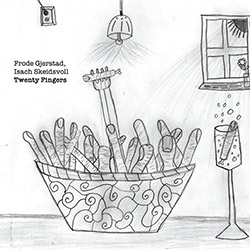

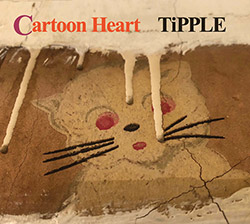












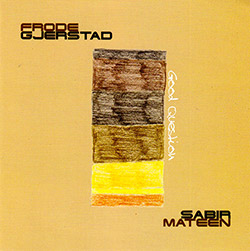


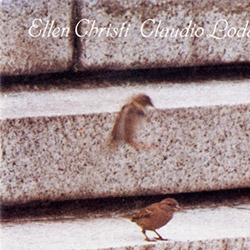
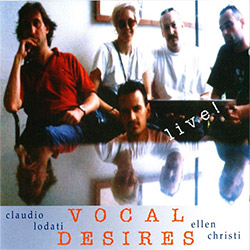

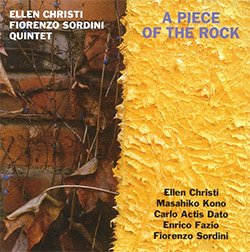
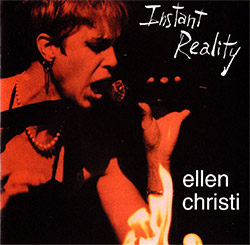
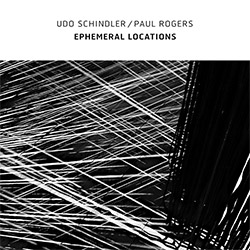











![Deupree, Jerome / Sylvie Courvoisier / Lester St. Louis / Joe Morris: Canyon [2 CDs]](https://www.teuthida.com/productImages/misc4/36404.jpg)


![Eternities: Rides Again [CASSETTE]](https://www.teuthida.com/productImages/misc4/36247.jpg)

![Lopez, Francisco: Untitled (2021-2022) [2 CDs]](https://www.teuthida.com/productImages/misc4/36438.jpg)




![Eventless Plot | Haarvol: The Subliminal Paths [CASSETTE + DOWNLOAD]](https://www.teuthida.com/productImages/misc4/36232.jpg)












![Eventless Plot | Francesco Covarino: Methexis [CASSETTE + DOWNLOAD]](https://www.teuthida.com/productImages/misc4/36231.jpg)



![Das B (Mazen Kerbaj / Mike Majkowski / Magda Mayas / Tony Buck): Love [VINYL]](https://www.teuthida.com/productImages/misc4/36329.jpg)


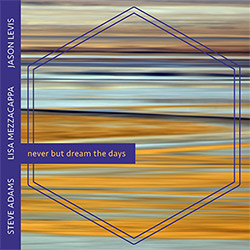
![Hemphill Stringtet, The: Plays the Music of Julius Hemphill [VINYL]](https://www.teuthida.com/productImages/misc4/36409.jpg)

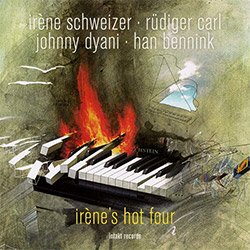

![Halvorson, Mary Septet: Illusionary Sea [2 LPS]](https://www.teuthida.com/productImages/misc4/17952.jpg)

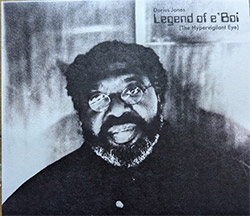




![Money : Money 2 [2 CDs]](https://www.teuthida.com/productImages/misc4/35894.jpg)




![Klinga, Erik: Elusive Shimmer [VINYL]](https://www.teuthida.com/productImages/misc4/36258.jpg)
![CHANGES TO blind (Phil Zampino): Volume 9 - I Wave on a Fine Vile Mist [CD + DOWNLOAD]](https://www.teuthida.com/productImages/misc4/36061.jpg)

![Wallmart / Rubbish: Asset Protection [split CD]](https://www.teuthida.com/productImages/misc4/35900.jpg)


![+Dog+: The Family Music Book Vol. 5 [2 CDs]](https://www.teuthida.com/productImages/misc4/35897.jpg)
![Kuvveti, Deli : Kuslar Soyledi [CASSETTE w/ DOWNLOAD]](https://www.teuthida.com/productImages/misc4/36107.jpg)

![Nakayama, Tetsuya: Edo Wan [CASSETTE w/ DOWNLOAD]](https://www.teuthida.com/productImages/misc4/36105.jpg)
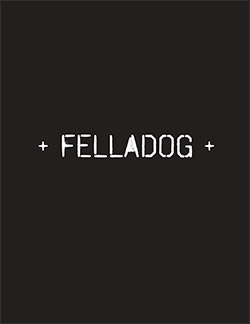
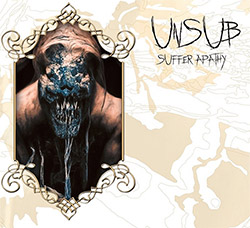


![Yiyuan, Liang / Li Daiguo: Sonic Talismans [VINYL]](https://www.teuthida.com/productImages/misc4/35957.jpg)
![Brown, Dan / Dan Reynolds: Live At The Grange Hall [unauthorized][CASSETTE]](https://www.teuthida.com/productImages/misc4/36245.jpg)








![Palestine, Charlemagne / Seppe Gebruers: Beyondddddd The Notessssss [VINYL]](https://www.teuthida.com/productImages/misc4/36206.jpg)
![Palestine, Charlemagne / Seppe Gebruers: Beyondddddd The Notessssss [NEON GREEN VINYL]](https://www.teuthida.com/productImages/misc4/36207.jpg)

![Laubrock, Ingrid: Purposing The Air [2 CDs]](https://www.teuthida.com/productImages/misc4/35639.jpg)

![Yoko, Ono / The Great Learning Orchestra: Selected Recordings From Grapefruit [2 CDs]](https://www.teuthida.com/productImages/misc4/35841.jpg)









![Zorn, John / JACK Quartet: The Complete String Quartets [2 CDs]](https://www.teuthida.com/productImages/misc4/35609.jpg)

![Lonsdale, Eden: Dawnings [2 CDs]](https://www.teuthida.com/productImages/misc4/35480.jpg)



![Sorry For Laughing (G. Whitlow / M. Bates / Dave-Id / E. Ka-Spel): Rain Flowers [2 CDS]](https://www.teuthida.com/productImages/misc4/35985.jpg)

![Rolando, Tommaso / Andy Moor : Biscotti [CASSETTE w/ DOWNLOADS]](https://www.teuthida.com/productImages/misc4/36106.jpg)


![Electric Bird Noise / Derek Roddy: 8-10-22 [CD EP]](https://www.teuthida.com/productImages/misc4/35970.jpg)








![Elephant9 : Mythical River [VINYL]](https://www.teuthida.com/productImages/misc4/34624.jpg)



![Elephant9 with Terje Rypdal: Catching Fire [VINYL 2 LPs]](https://www.teuthida.com/productImages/misc4/35355.jpg)
![Deerlady (Obomsawin, Mali / Magdalena Abrego): Greatest Hits [VINYL]](https://www.teuthida.com/productImages/misc4/34876.jpg)







![Surplus 1980: Illusion of Consistency [CD]](https://www.teuthida.com/productImages/misc4/35069.jpg)
![Staiano, Moe: Away Towards the Light [VINYL + DOWNLOAD]](https://www.teuthida.com/productImages/misc4/35037.jpg)
![Coley, Byron: Dating Tips for Touring Bands [VINYL]](https://www.teuthida.com/productImages/misc4/17906.jpg)

![Lost Kisses: My Life is Sad & Funny [DVD]](https://www.teuthida.com/productImages/misc4/lostKissesDVD.jpg)